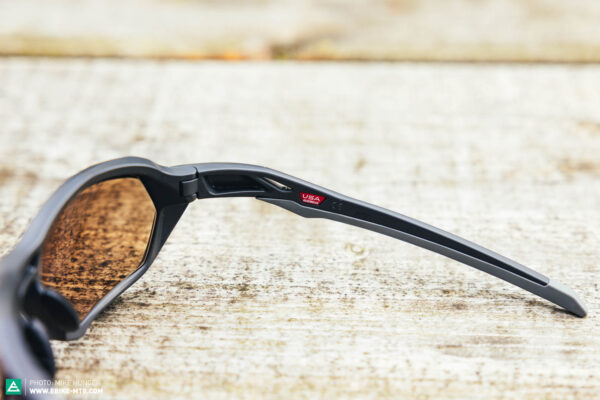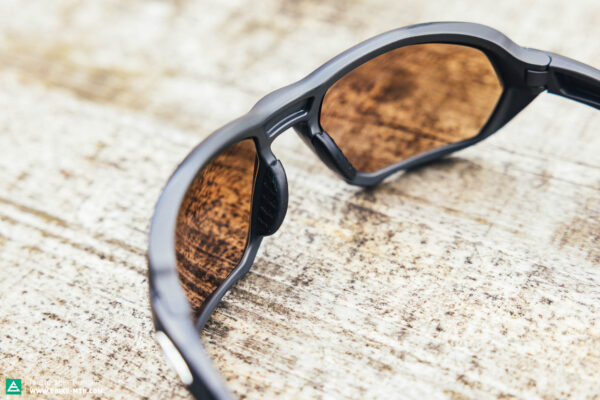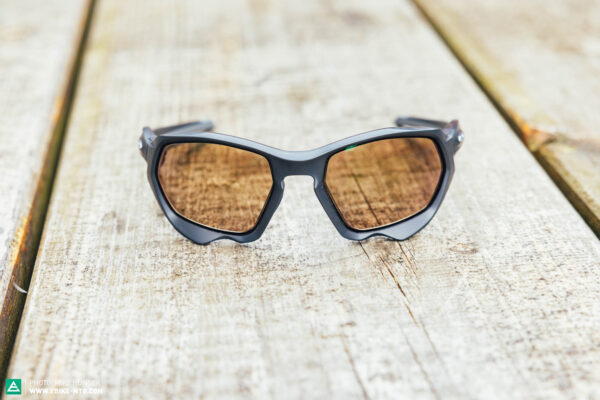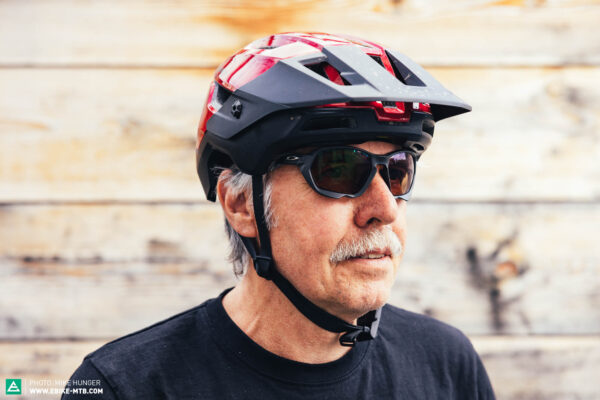The Lab: Oakley Plazma – sports glasses with prescription
Few of us have eagle eyes, and therefore need to wear glasses or contact lenses. And seeing clearly when mountain biking is a must. But what is the best corrective sports eyewear for trail riding? We consulted opticians as well as Oakley, putting the Oakley Plazma to the test.

Those who must wear prescription spectacles don’t have to forfeit the comfort of cycling eyewear. You have a choice between corrective lenses, or clips that are integrated into the frame of the sports eyewear. There are advantages and disadvantages to both, but they aren’t equally suitable for everyone. Cycling eyewear with corrective lenses can only cover a range between about +3.0 and -5.0 dioptres, the exact number depends on the brand, frame shape, as well as the curvature and thickness of the lenses. If you’re within this range, you’ve got the benefit of having the entire field of vision corrected. Above all, this has the advantage that you can still see clearly when turning to look behind you. The smaller focal area of a clip can’t do that, though it’s much cheaper and can be replaced, if necessary, which you might need to do if your visual acuity changes, for example.

the nose and temple pads are made of Oakley’s non-slip Unobtainium, providing a super secure fit.

the three-point fit of the Oakley Plazma guarantees ideal visual alignment.
Our tester Manne opted for the premium solution and tested the Oakley Plazma sports glasses, specially designed for mountain bikers, with progressive, multifocal lenses, correcting both near and far vision. For the frame, Manne opted for the Matte Carbon colourway, and he chose the Clear to Black Iridium photochromic lenses. These are multifocal and ColorMatic lenses that darken in bright light. Depending on the prescription, the price of these lenses is between € 700 and € 800. Oakley offer seven different colour combinations for the temples and lenses of this model.
You don’t buy premium eyewear like this online, but from an optician who is also an Oakley dealer. In addition to your visual acuity, the distance between your eyes and other individual factors must also get checked. It’s only once you have the exact specifications that they can be transferred to the desired model, avoiding unwanted effects such as blurring, which can lead to nausea. If you also need glasses for reading, you can opt for progressive lenses that are adapted to your position on the bike, providing a clear view of your navigation system or riding data. Having the lenses adapted is so complicated since they’re slightly curved to ensure a better side view and to better protect your eyes from dirt and flying debris.
The advantages of photochromic lenses
Our tester Manne opted for photochromic lenses, which means he only needs one pair of glasses instead of having to lug around sunglasses when heading outdoors. In addition, you don’t have to switch between pairs when riding into a clearing and then back into the woods. That said, we wouldn’t recommend the self-tinting lenses for fast and competitive riders because they adapt too slowly to keep up with rapidly changing light. You’ll have to test it out and see what works for you.

the corrective lenses of the Oakley Plazma with the progressive option allow you to see both near and far.

the photochromic lenses automatically adapt to the light conditions.
Riding impressions
The optician recommended wearing the glasses half an hour before riding to get accustomed to the lenses. With that done, the glasses provide clear vision and contrast, as well as a perfect and secure fit. The sturdy frame, wide field of view, and low weight almost let you forget that you’re wearing glasses. They remain in place and don’t slip even when things get rough on the trail. Since the optician adjusted the progressive lenses to the rider’s distance from the handlebar, the ebike display was easy to read while riding.
The Oakley Plazma with progressive lenses is by far the most elegant, but also the most expensive solution for trail riders with prescription glasses. In return, however, you needn’t make any compromises, and you can always rely on the performance of the RX glasses. Of course, the Oakley Plazma can also be used for many other outdoor sports, and they cut a fine figure during your well-deserved post ride drink too, thanks to the photochromic lenses, making them the perfect all-round eyewear.
Tops
- bomb-proof fit
- available with prescription lenses, including a progressive, multifocal option
- photochromic lenses with automatic dimming in bright light
Flops
- expensive if you need RX lenses (especially with the progressive option)
- limited to -5 dioptres of myopic correction due to the curvature of the lenses
You can find more information at oakley.com

Did you enjoy this article? If so, we would be stoked if you decide to support us with a monthly contribution. By becoming a supporter of E-MOUNTAINBIKE, you will help secure a sustainable future for high-quality cycling journalism. Click here to learn more.
Words: Susanne Feddersen Photos: Mike Hunger








